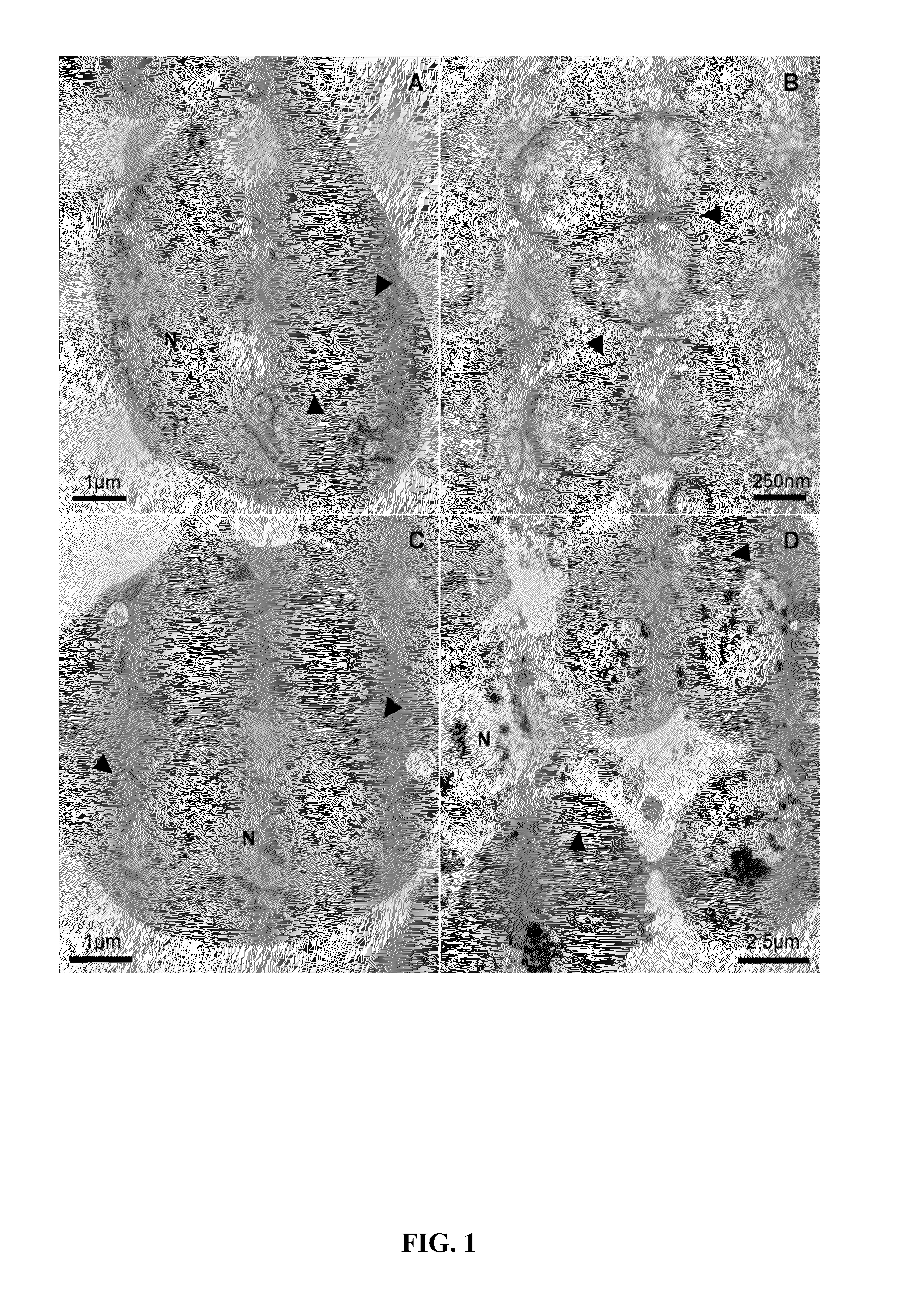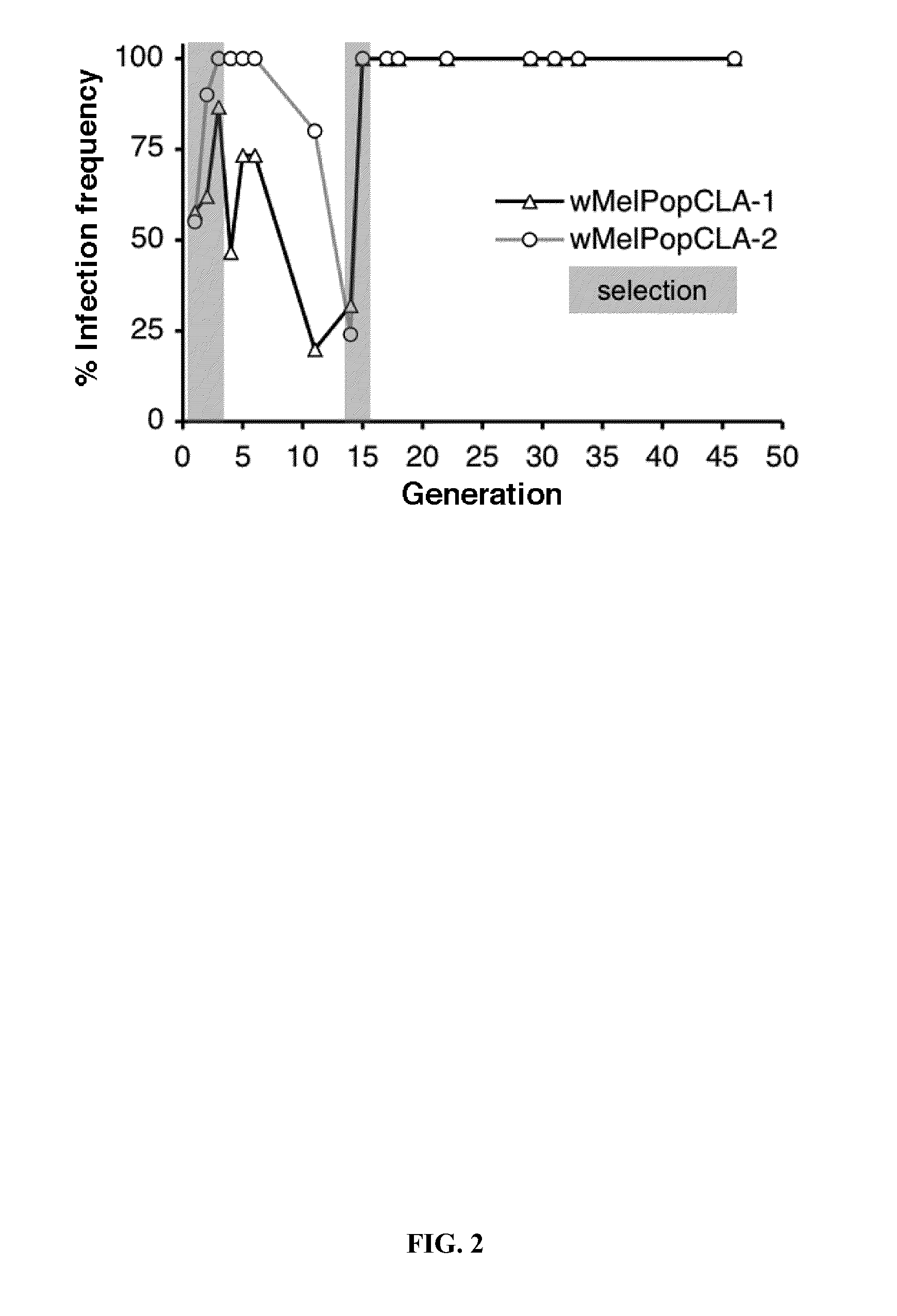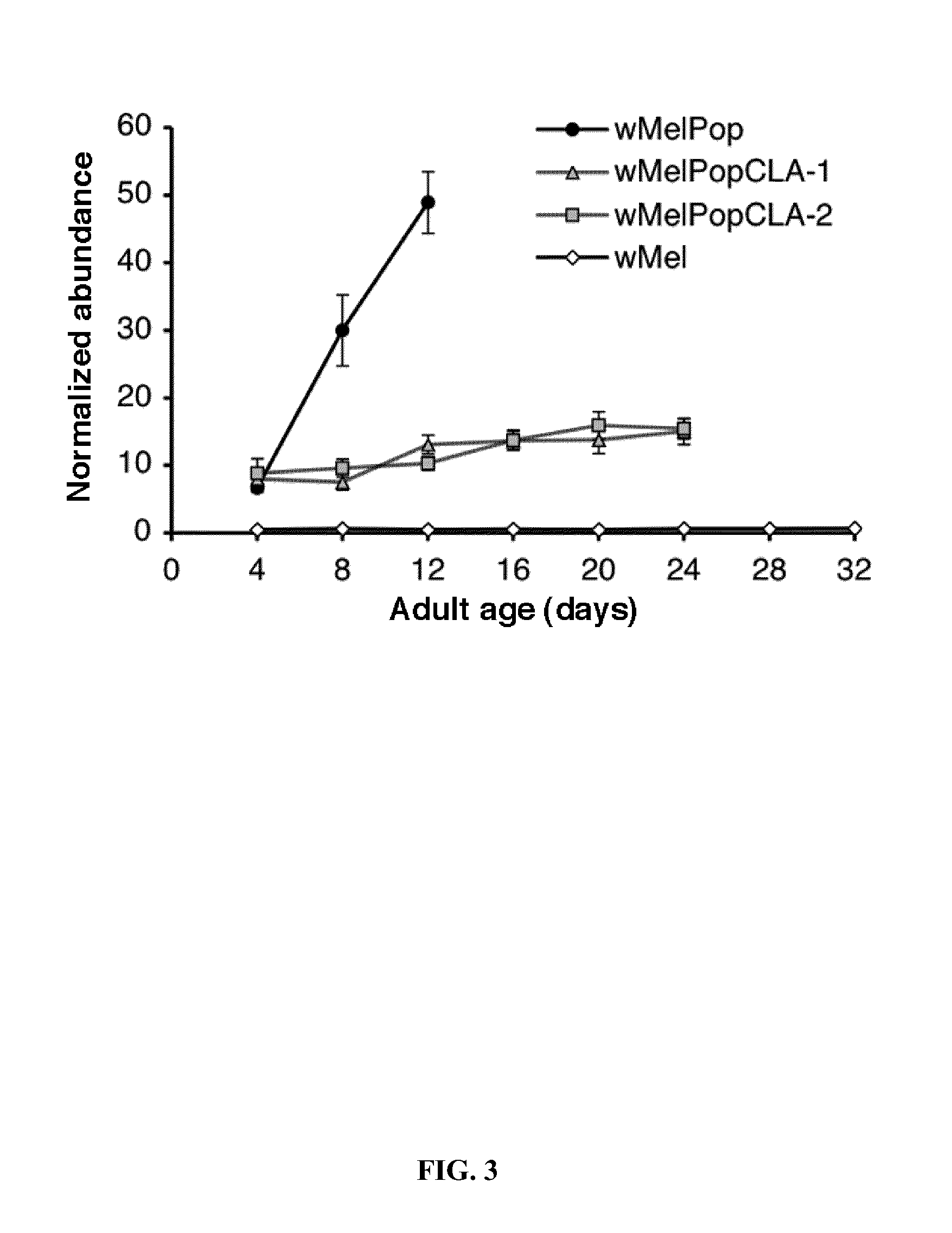Modified arthropod and method of use
a technology of arthropods and modified arthropods, applied in the field of arthropods and arthropodtransmitted diseases, can solve the problems of researchers not being able to colonize i>wolbachia/i>in, and achieve the effect of reducing disease transmission
- Summary
- Abstract
- Description
- Claims
- Application Information
AI Technical Summary
Benefits of technology
Problems solved by technology
Method used
Image
Examples
example 1
Host Adaptation of Wolbachia after Long-Term Serial Passage in Mosquito Cell Lines
Materials and Methods
Cell Lines and Maintenance
[0211]Three cell lines were used in this study: (i) Aa23.T derived from Ae. albopictus embryos (O'Neill et al., 1997) (ii) RML-12 derived from Ae. aegypti larvae (C. E. Yunker; personal communication) (Kuno, 1983) and (iii) MOS-55 derived from An. gambiae larvae (Marhoul and Pudney, 1972). All these cell lines were confirmed as negative for Wolbachia infection prior to this study by PCR as outlined below. Aa23.T and RML-12 cell lines were maintained in growth medium consisting of equal volumes of Mitsuhashi-Maramorosch (Mitsuhashi and Maramorosch, 1964) (1 mM CaCl2, 0.2 mM MgCl2, 2.7 mM KCl, 120 mM NaCl, 1.4 mM NaHCO3, 1.3 mM NaH2PO4, 22 mM D (+) glucose, 6.5 g / L lactalbumin hydrolysate, and 5.0 g / L yeast extract) and Schneider's Insect Medium (Sigma-Aldrich, St Louis, Mo.) supplemented with 10% heat-inactivated fetal bovine serum (HIFBS). MOS-55 was maint...
example 2
Stable Introduction of a Life-Shortening Wolbachia Infection into Mosquito Aedes Aegypti
Materials and Methods
Mosquito Strains and Maintenance
[0230]The naturally uninfected JCU strain of Aedes aegypti was established from A. aegypti eggs that were field-collected from Cairns (Queensland, Australia) in 2005. For routine maintenance, eggs were hatched under vacuum for 30 min, and larvae reared at a set density of ˜150 larvae in 3 L of distilled water in plastic trays (30×40×8 cm). Larvae were fed with 150 mg (½ tablet) fish food per pan per day (Tetramin Tropical Tablets, Tetra, Germany) until pupation. Adult mosquitoes were maintained in screened 30×30×30 cm cages enclosed within transparent plastic bags, with damp cotton wool to maintain elevated humidity (25±1° C., ˜80% relative humidity (RH), 12:12 h light:dark). Adults were provided with constant access to 10% sucrose solution, and females (5 day old) supplied with a human blood source for egg production. PGYP1 and PGYP2 lines we...
example 3
Increased Locomotor Activity and Metabolism of Aedes Aegypti Infected with a Life-Shortening Strain of Wolbachia Pipientis
Materials and Methods
Experimental Organisms
[0246]The wMelPop-infected Aedes aegypti line (PGYP1) used in this study was generated as previously described (see Example 2). In brief, the Wolbachia strain, wMelPop, native to Drosophila melanogaster (Min and Benzer, 1997) was transferred into Ae. aegypti by embryonic microinjection. Descendants of this isofemale line were outcrossed for several generations to the original recipient line of mosquitoes and selected for stable infection before closing the colony. At generations 8 & 9 post-transinfection, an aposymbiotic control line was created by antibiotic treatment of the Wolbachia infected line (see Example 2). All experiments reported here were carried out on mosquitoes at generations 14-16 post trans-infection (i.e. 4-6 generations post treatment), with replicates representing different generations. Mosquitoes we...
PUM
 Login to View More
Login to View More Abstract
Description
Claims
Application Information
 Login to View More
Login to View More - R&D
- Intellectual Property
- Life Sciences
- Materials
- Tech Scout
- Unparalleled Data Quality
- Higher Quality Content
- 60% Fewer Hallucinations
Browse by: Latest US Patents, China's latest patents, Technical Efficacy Thesaurus, Application Domain, Technology Topic, Popular Technical Reports.
© 2025 PatSnap. All rights reserved.Legal|Privacy policy|Modern Slavery Act Transparency Statement|Sitemap|About US| Contact US: help@patsnap.com



